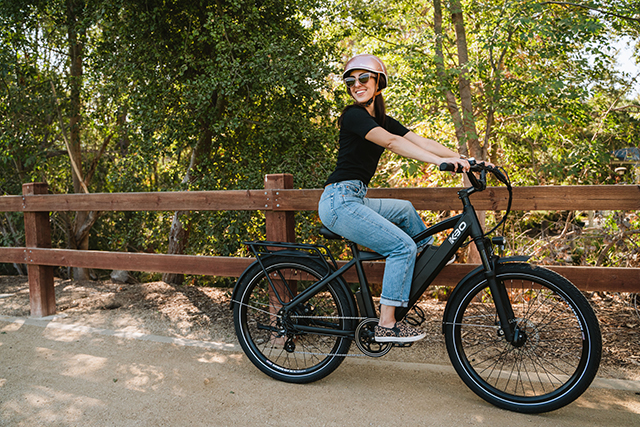Pedaling Forward
02 Aug 2023
E-bikes roll into legal territory
By Jason Frye

In early June, the Boulder City Council voted unanimously to make a change in how open spaces are used by permitting certain types of e-bikes (low-speed, battery- and motor- assisted bicycles) on some trails in town. It’s a move that’s sure to continue to benefit commuters, pleasure riders and outdoor lovers alike.
According to Phillip Yates, spokesperson for the City of Boulder Open Space and Mountain Parks (OSMP), “e-bikes [are] allowed on 39 miles of OSMP-managed multi-use trails where biking is already allowed. That figure represents about 25 percent of the 154 miles comprising the OSMP trail system.”
“From July 1, 2023, e-bikes will be allowed on all Plains Trails east of Broadway that currently allow bikes, on the Boulder Canyon Trail, as well as Chapman Drive Trail, Foothills South Trail and Wonderland Lakes Trails,” says Dr. Nicole Speer, Boulder
City Councilmember.
Fellow Councilmember Matthew Benjamin calls this an “ongoing evolution” of Boulder’s Open Space policies, driven in part by how the public uses these open spaces.
“For decades we were all about acquisition—obtaining land and building our network of space—but now it’s shifting more toward stewardship. We’re looking at how to best use the open spaces we have,” Benjamin says. He cites a significant surge in bikeshare and e-bike use during the pandemic, along with ongoing high usage rates of both bikeshare and e-bikes, as evidence that the public is now utilizing these spaces differently.
In addition to responding to how Boulderites use open spaces, Wendy Sweet, Executive Director of the Boulder Mountainbike Association, says the new regulations do more by “clearing up issues around adjoining and sometimes co-managed trail segments.” In other words, even though certain trails may seem connected, they are, in reality, governed by different entities, such as the state, county or city, leading to potential confusion regarding rules and guidelines for those embarking into the open spaces.
A 2017 Colorado law re-classified e-bikes, which had previously been deemed motor vehicles (like cars and ATVs), to allow them on multi-use paths, “unless not allowed by local regulation,” says Dr. Speer. This meant that just a few months ago, as riders left a county-controlled stretch of trail and entered a stretch overseen by OSMP, they may have needed to dismount, walk their bike 500 yards to another county-owned segment and then repeat the process a quarter-mile down the road.
This shift in policy isn’t a change to the city’s OSMP Charter, which can only happen by public vote. Rather, it’s bringing what Benjamin calls “clarity and definition” to the Open Space Action Plan by creating a consistent set of rules for e-bikes (especially on those co-managed and/or overlapping trail segments) and defining what types of e-bikes fall under the “passive recreational use” umbrella.
So, what’s all this mean? According to Sweet, “gravel riders can enjoy riding Chapman Drive to the top of Flagstaff Mountain; commuters will appreciate riding the entire LoBo Trail from Longmont to Boulder; and mountain bikers will be able to ride the Dirty Bismark at Marshall Mesa and those stunning views of the Flatirons.”
Ultimately, however, these changes make Boulder’s beauty more accessible to the masses—or, at least to those willing to embark on a two-wheeled, electric-powered adventure.












